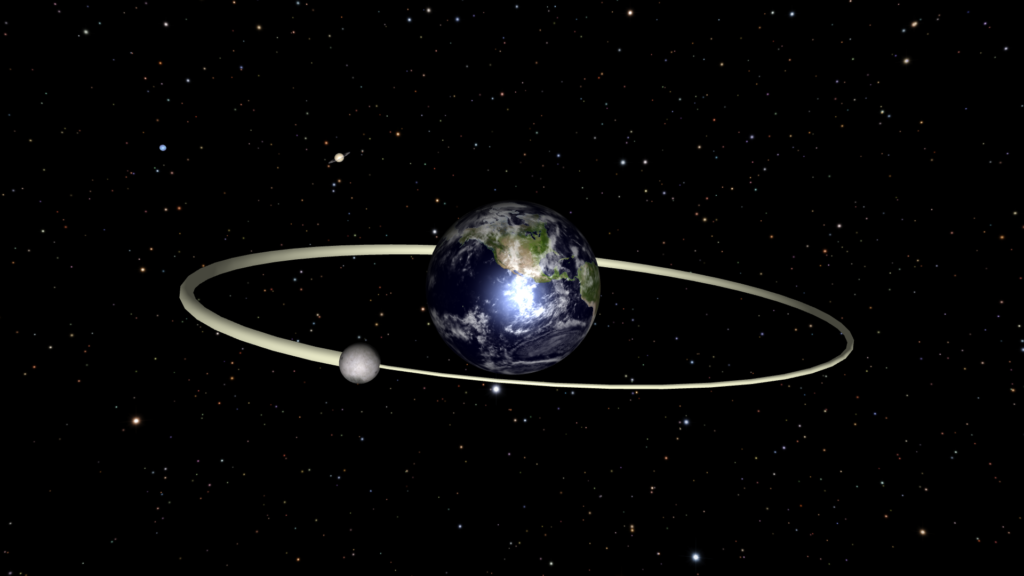All the stars seem equally distant from us, as if they are placed on an imaginary celestial sphere. In fact, all the stars are at different distances from the Sun. Bright stars located far away from us seem faint. Conversely, faint stars not far the Sun appear bright.
In fact, the familiar shapes of the constellations are a play of chance. Stars forming a certain shape, such as a dipper, may actually be completely unrelated to each other.
And what if we place all the stars on the celestial sphere after all?
In the video, you can see how Ursa Major and Ursa Minor will look like if all the stars of these constellations are at the same distance from us in 20 parsecs, which corresponds to a distance of about 65 light years. Let’s make a reservation that we will not take all the stars, but only those that are not further than 200 parsecs from us. If we take all the stars at all and place them at a distance of 20 parsecs, then we will see a solid glow of stars.
When all the stars are at the same distance from us, it is easy to judge their true brightness. It can be seen that in this case the stars of the Big Dipper will get lost among other stars. So, in fact, these stars do not stand out in any particular way relative to others. But the brightest star in this part of the sky turns out to be the Polar.
See with subtitles.
The video was made using own software. Information about the stars is taken from the Hipparcos catalogue.
Creative Commons Attribution 4.0 license to use the track Prelude No. 17 (performer: Chris Zabriskie): https://creativecommons.org/licenses/by/4.0/
Source: http://chriszabriskie.com/preludes/
Performer: http://chriszabriskie.com/





